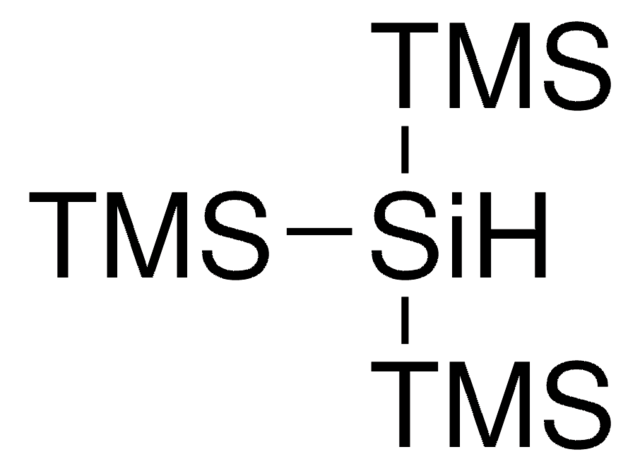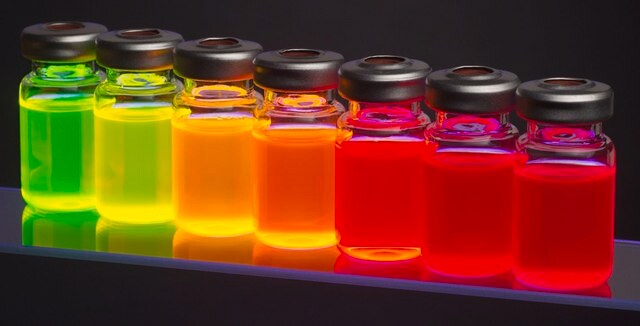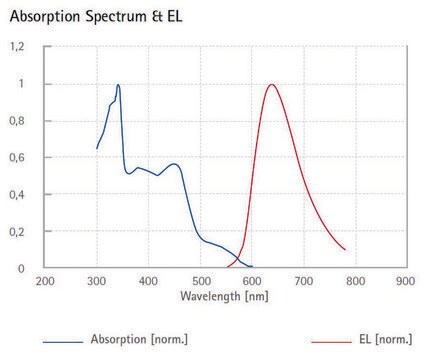790192
CdSe/ZnS core-shell type quantum dots
stabilized with octadecylamine ligands, fluorescence λem 620 nm, solid
Synonim(y):
Artificial atoms, Fluorescent nanocrystals, QDs
About This Item
Polecane produkty
Szukasz podobnych produktów? Odwiedź Przewodnik dotyczący porównywania produktów
Zastosowanie
Protocol to make QD solutions (dispersing QDs into solutions):
1. Weigh desired amount of the quantum dot powder and put it in a glass vial;
2. Add desired amount of the solvent, i.e. toluene, chloroform, hexane, etc. (mostly non-polar organic solvents) in the vial and shake the vial;
3. If there is any solid left in the vial after shaking, sonicate the vial for 30~60 seconds to get the quantum dot powder well dispersed. If required dilute the solution further.
Material has a shelf life of around 3 years if stored properly. Store at room temperature (4-25 °C); do not freeze. Should not be exposed to extreme temperatures.
Informacje prawne
Hasło ostrzegawcze
Danger
Zwroty wskazujące rodzaj zagrożenia
Zwroty wskazujące środki ostrożności
Klasyfikacja zagrożeń
Acute Tox. 4 Inhalation - Acute Tox. 4 Oral - Aquatic Acute 1 - Aquatic Chronic 1 - Eye Dam. 1 - Skin Irrit. 2 - STOT RE 2 - STOT RE 2 Oral
Organy docelowe
Kidney,Bone, Liver,Gastrointestinal tract,Immune system
Zagrożenia dodatkowe
Kod klasy składowania
11 - Combustible Solids
Klasa zagrożenia wodnego (WGK)
WGK 3
Temperatura zapłonu (°F)
Not applicable
Temperatura zapłonu (°C)
Not applicable
Wybierz jedną z najnowszych wersji:
Masz już ten produkt?
Dokumenty związane z niedawno zakupionymi produktami zostały zamieszczone w Bibliotece dokumentów.
Klienci oglądali również te produkty
Produkty
Quantum dots are tiny particles or nanocrystals of a semiconducting material with diameters in the range of 2-10 nanometers.
Kropki kwantowe to maleńkie cząsteczki lub nanokryształy materiału półprzewodnikowego o średnicy w zakresie 2-10 nanometrów.
Since the first report of the low-cost dye-sensitized solar cell (DSSC) in 1991 by Gratzel and his coworker,1 dye-sensitized solar cells (DSSC) has been regarded as one of the most promising photovoltaic technologies because of their transparent and colorful characteristics, as well as low cost.
Professor Sharma and colleagues review the synthesis and applications of this novel material. This includes a discussion of the unique properties of quantum dots and their suitability for solar cell applications, along with common synthesis techniques used to develop these materials.
Nasz zespół naukowców ma doświadczenie we wszystkich obszarach badań, w tym w naukach przyrodniczych, materiałoznawstwie, syntezie chemicznej, chromatografii, analityce i wielu innych dziedzinach.
Skontaktuj się z zespołem ds. pomocy technicznej


![(Ir[dF(CF3)ppy]2(dtbpy))PF6](/deepweb/assets/sigmaaldrich/product/structures/982/913/02dd8ddd-6deb-40a0-ab9b-07b18f1abb09/640/02dd8ddd-6deb-40a0-ab9b-07b18f1abb09.png)










